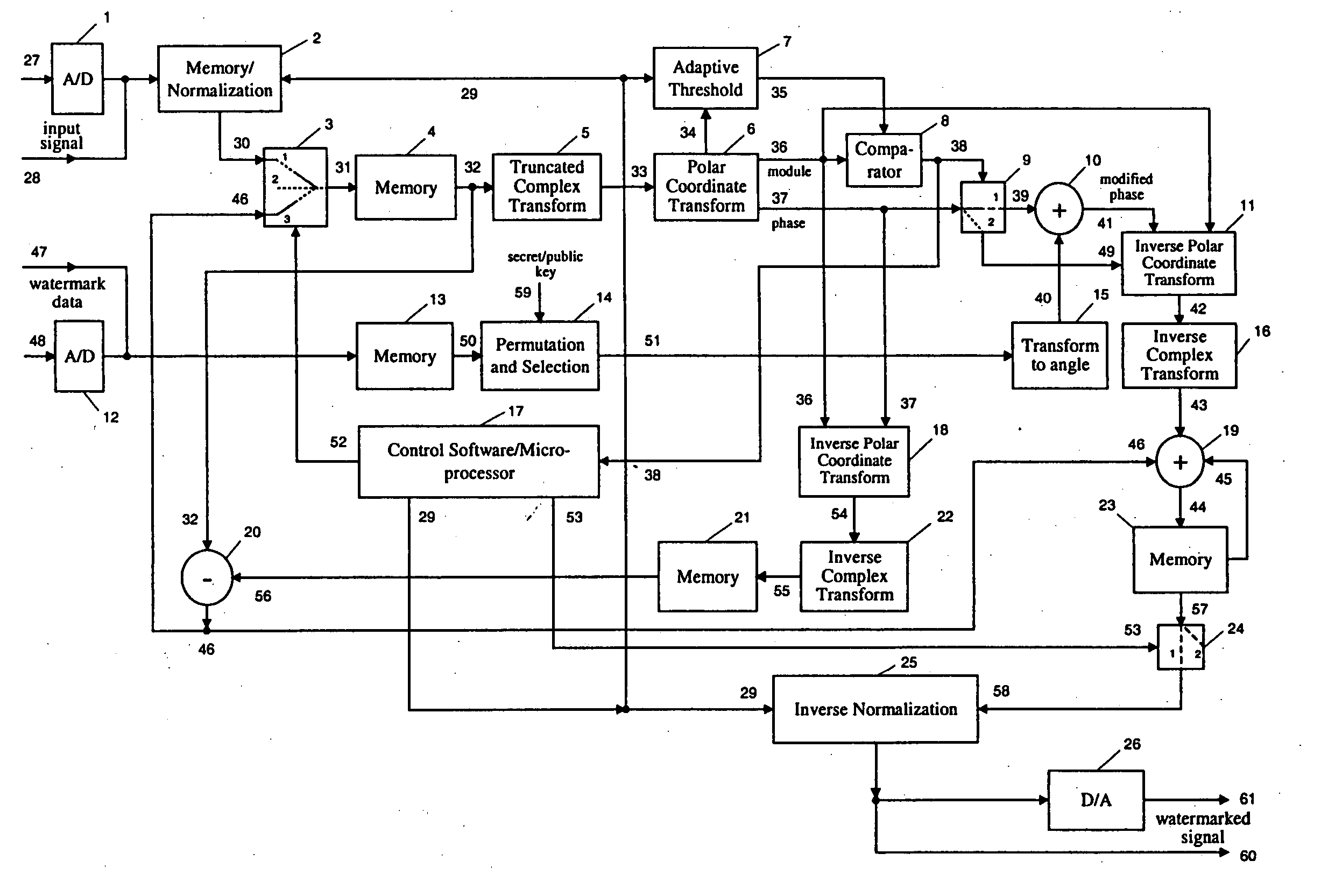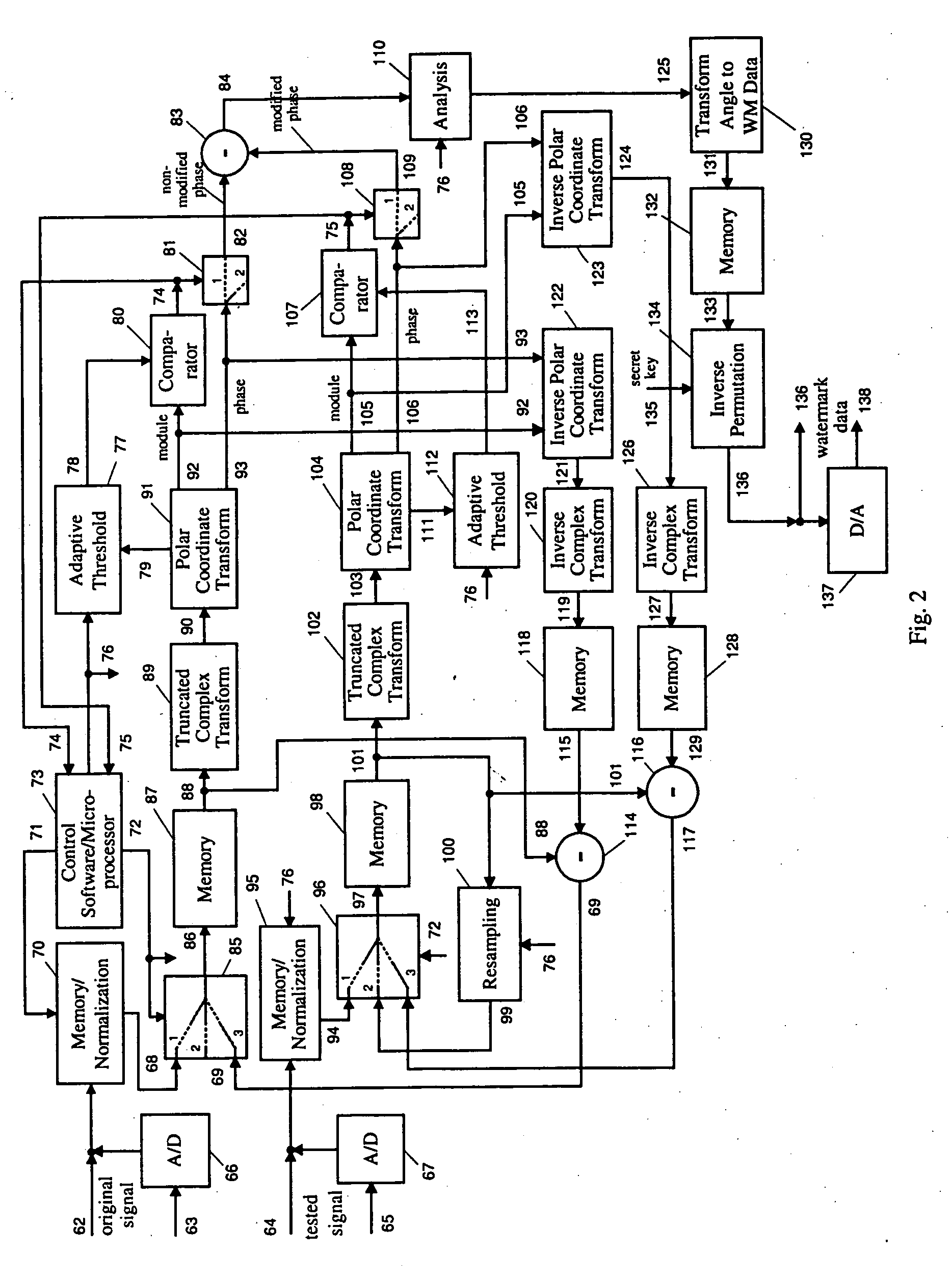Method and system for digital watermarking of multimedia signals
- Summary
- Abstract
- Description
- Claims
- Application Information
AI Technical Summary
Benefits of technology
Problems solved by technology
Method used
Image
Examples
Embodiment Construction
[0046] The preferred embodiment of the apparatus for digital watermarking of media signals in accordance with the invention is shown in FIG. 1, which is the block diagram of the coder element. It consists of: analog-to-digital (AD) converters, a digital-to-analog (DA) converter, two-way and three-way switches, memories, block for the input fragment data, a block for amplitude normalization of the fragment, block for inverse amplitude normalization, a block for the definition of the truncated complex orthogonal transform coefficients, a block for polar coordinate transform, blocks for inverse polar coordinates transform, blocks for inverse complex orthogonal transform, summators, a block for adaptive threshold calculation, a comparator, a block for permutations and selection of the watermark elements and for their transformation into corresponding angles, and a microprocessor block with control software. Various aspects of these blocks may be implemented in different embodiments in s...
PUM
 Login to View More
Login to View More Abstract
Description
Claims
Application Information
 Login to View More
Login to View More - R&D
- Intellectual Property
- Life Sciences
- Materials
- Tech Scout
- Unparalleled Data Quality
- Higher Quality Content
- 60% Fewer Hallucinations
Browse by: Latest US Patents, China's latest patents, Technical Efficacy Thesaurus, Application Domain, Technology Topic, Popular Technical Reports.
© 2025 PatSnap. All rights reserved.Legal|Privacy policy|Modern Slavery Act Transparency Statement|Sitemap|About US| Contact US: help@patsnap.com



